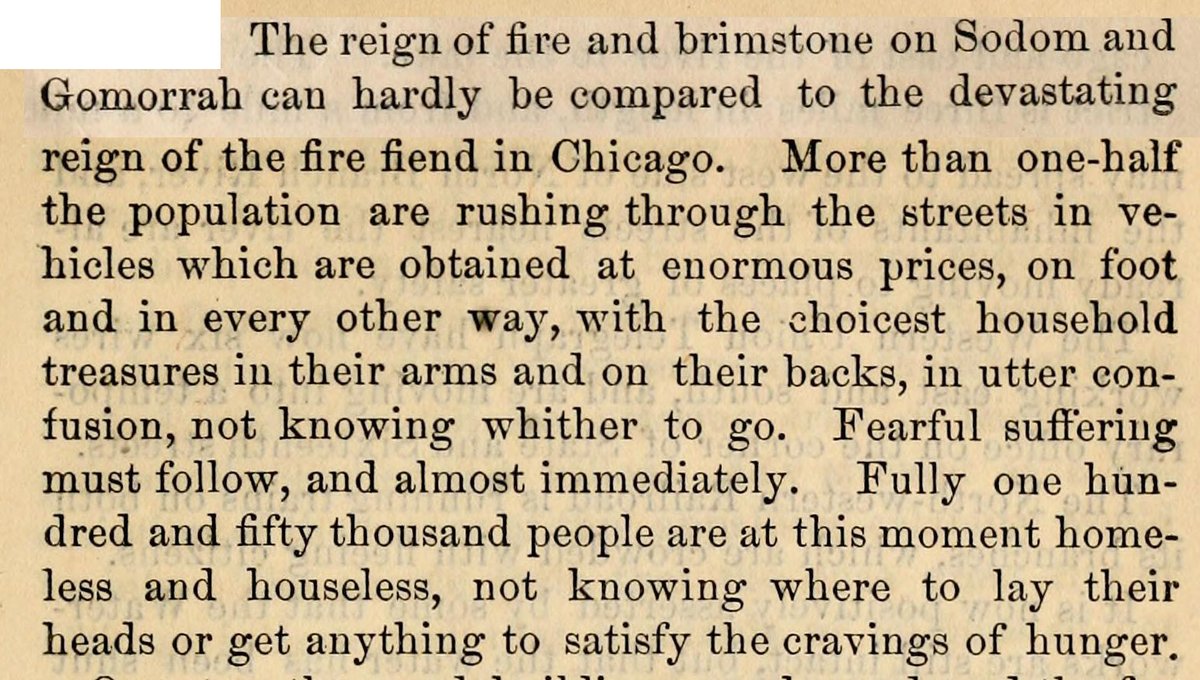
James Hildreth led more efforts to halt the fire’s progress—this time by exploding buildings at the fire’s south end.
Tribune editor Horace White, who lived nearby, recalled:
"We heard loud detonations, and a rumor went around that buildings were being blown up with gunpowder. … The reverberations … gave us all heart again. …
"We heard loud detonations, and a rumor went around that buildings were being blown up with gunpowder. … The reverberations … gave us all heart again. …

"Think of a people feeling encouraged because somebody was blowing up houses in the midst of the city, and that a shower of bricks was very likely to come down on their heads!"
First assistant fire marshal John Schenk later credited these demolitions with saving at least a portion of Chicago:
"Several buildings were blown up all round by ex-alderman Hildreth, and that stopped the fire. There were a good many kegs of powder on the lake shore."
"Several buildings were blown up all round by ex-alderman Hildreth, and that stopped the fire. There were a good many kegs of powder on the lake shore."
And former alderman Charles Wicker said:
"I considered it absolutely necessary that these buildings be blown up, and I think it was by the efforts made by a few of us, with the assistance of the mayor and the commissioners, that we stopped the fire at that point. …
"I considered it absolutely necessary that these buildings be blown up, and I think it was by the efforts made by a few of us, with the assistance of the mayor and the commissioners, that we stopped the fire at that point. …
"Had we not blown up those buildings west of the Michigan Avenue Hotel, the whole of that block would have gone."
• • •
Missing some Tweet in this thread? You can try to
force a refresh











